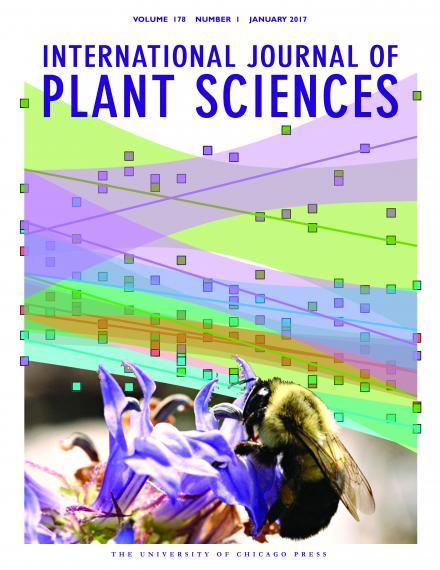Wildflowers can limit the amount of pollen deposited on each bee visitor

Many plant species depend on animals such as bees to transfer pollen from flower to flower. This dependence on bees is risky because they can consume pollen rather than transferring it to another flower. Plants can reduce this risk by limiting the amount of pollen deposited on each successive bee visitor.
In a study featured on the cover of the January 2017 issue of the International Journal of Plant Sciences, Prof. Chris Caruso’s lab measured the amount of pollen deposited on successive visitors to the bumblebee-pollinated wildflower Lobelia siphilitica,
The research team hypothesized that the flowers would dispense a constant or increasing proportion of available pollen because it would maximize male fitness without having to increase pollen production. This should also mean that the presentation schedule would be highly heritable.
To measure the pattern of pollen deposition, Kate Eisen (then a research technician in Prof. Caruso’s lab and currently a PhD student at Cornell University) constructed an artificial bumblebee by wrapping an eraser in velvet fabric, which is similar in texture to the hairs on a bumblebee’s thorax.
When this artificial bumblebee was inserted into a Lobelia siphilitica flower, pollen was deposited on the velvet. The artificial bumblebee was used to simulate 16 visits to each Lobelia siphilitica flower, and for each visit the amount of pollen deposited on the velvet fabric was counted. These counts were used to measure how the amount of pollen deposited varied across successive visits.
As expected for a bee-pollinated plant, Lobelia siphilitica limited the amount of pollen deposited during each successive simulated visit; on average, Lobelia siphilitica flowers deposited only 6.83% of their pollen per simulated visit.
However, they also found that Lobelia siphilitica actually dispensed a smaller proportion of available pollen in later visits and that heritability was low.
The percentage of pollen deposited was small even compared to other bee-pollinated species, suggesting that Lobelia siphilitica has experienced unusually strong selection on traits that increase the amount of pollen transferred to other flowers.